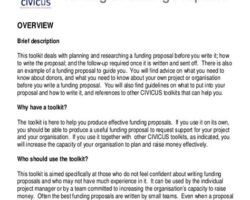Choosing the Right Venue
Choosing the right venue is a crucial step in organizing any event or workshop. The venue sets the foundation for the overall experience and can greatly impact the success of your workshop. When selecting a venue, there are several factors to consider to ensure that it meets the needs of your workshop and participants.
Location: The location of the venue is one of the most important aspects to consider. It should be easily accessible for the majority of your target audience. Consider the proximity to public transportation, parking facilities, and any special needs of your participants. A centrally located venue can attract a larger audience and make it convenient for attendees to reach.
Amenities and Facilities: The amenities and facilities provided by the venue are essential for creating a comfortable and functional environment. Check if the venue has the necessary equipment and resources for your workshop, such as tables, chairs, audio-visual systems, and Wi-Fi connectivity. Additionally, consider if the venue offers any extra features like breakout rooms, catering services, or outdoor spaces that can enhance the workshop experience.
Capacity: It is crucial to choose a venue that can accommodate the expected number of participants. The size of the venue should match the size of your workshop. A venue that is too small can create a cramped and uncomfortable atmosphere, while a venue that is too large may feel empty and lack intimacy. Consider the seating arrangements and available space for activities and ensure that it aligns with the workshop’s objectives.
- Budget: Your budget plays a significant role in the venue selection process. Determine how much you are willing to spend on the venue and allocate your budget accordingly. Keep in mind that the cost of the venue should also include any additional services or amenities required.
- Availability: Check the availability of the venue on the desired dates and times. Some venues may have limited availability or be fully booked during certain periods. It is advisable to book the venue well in advance to secure your preferred dates and avoid any last-minute hassles.
- Atmosphere: The ambiance and atmosphere of the venue contribute to the overall experience of your workshop. Consider the style, decor, and overall vibe of the venue. Ensure that it aligns with the theme and objectives of your workshop and creates a welcoming and engaging environment for your participants.
| Factors to Consider | Description |
|---|---|
| Location | The venue should be easily accessible for your target audience, with proximity to transportation and parking facilities. |
| Amenities and Facilities | Check if the venue offers necessary equipment and resources, such as tables, chairs, AV systems, and Wi-Fi connectivity. |
| Capacity | Ensure that the venue can comfortably accommodate the expected number of participants and activities. |
| Budget | Determine your budget and consider the cost of the venue, including any additional services or amenities required. |
| Availability | Check the availability of the venue on your desired dates and book in advance to secure your preferred timing. |
| Atmosphere | Consider the style, decor, and overall vibe of the venue to ensure it aligns with your workshop’s theme and objectives. |
Creating a Schedule and Timeline
When organizing a workshop or event, one of the most crucial tasks is creating a schedule and timeline. This helps to ensure that everything runs smoothly and that participants have a clear understanding of what to expect. A well-planned schedule not only keeps you organized, but it also helps to manage participants’ expectations and minimizes the chances of any confusion or delays.
First and foremost, it is important to define the goals and objectives of your workshop. This will help you determine the overall duration and structure of the schedule. Make sure to allocate sufficient time for each activity, taking into consideration factors such as breaks, meals, and any necessary transitions between different sessions.
One effective approach is to divide your schedule into manageable time blocks. This allows participants to better comprehend the flow of the workshop and helps to keep everyone on track. Create a detailed outline of each time block, specifying the topic or activity to be covered. Using bold keywords within the outline can make it easier for participants to quickly grasp the main focus of each session.
- Start with an Introduction [30 minutes]
- Icebreaker Activity [15 minutes]
- Main Presentation: Topic A [45 minutes]
- Group Discussion [30 minutes]
- Lunch Break [1 hour]
- Workshop Activity: Topic B [1 hour]
In addition to a clear schedule, it can also be helpful to create a visual timeline. This can either be included as part of your workshop materials or displayed prominently during the event. A timeline provides participants with a clear overview of what will be covered and when. Consider using a table to highlight key milestones or activities, making the timeline easily scannable for participants.
| Time | Activity |
|---|---|
| 10:00 AM – 10:30 AM | Introduction |
| 10:30 AM – 10:45 AM | Icebreaker Activity |
| 10:45 AM – 11:30 AM | Main Presentation: Topic A |
| 11:30 AM – 12:00 PM | Group Discussion |
| 12:00 PM – 1:00 PM | Lunch Break |
| 1:00 PM – 2:00 PM | Workshop Activity: Topic B |
Remember to be flexible in your schedule, as unexpected changes and adjustments may arise during the workshop. Always have contingency plans and allow some buffer time between activities to account for any delays. By creating a well-structured and visually appealing schedule, you can ensure that your workshop runs smoothly and provides a valuable experience for all participants.
Selecting Suitable Craft Projects
When it comes to organizing a workshop, one of the most important decisions you have to make is selecting suitable craft projects. The craft projects you choose can greatly impact the success and engagement of your workshop participants. To ensure that your workshop is a hit, here are some key considerations to keep in mind when selecting craft projects:
1. Know your audience: Before deciding on craft projects, it’s important to understand the skill level, interests, and preferences of your workshop participants. Are they beginners or experienced crafters? Are they interested in a specific type of craft such as painting, knitting, or paper crafts? By knowing your audience, you can select craft projects that match their skill level and interests.
2. Consider the time frame: How much time do you have for your workshop? Some craft projects require more time and effort than others. If you have a limited time frame, it’s best to choose craft projects that can be completed within that time. On the other hand, if you have a longer workshop, you can consider more complex or intricate craft projects.
3. Provide variety: It’s important to offer a variety of craft projects to cater to different interests. Some participants may prefer working with paints, while others may enjoy working with fabrics or paper. By offering a range of craft projects, you create a more inclusive and engaging workshop environment.
To further assist you in selecting suitable craft projects, here is a list of craft ideas that can be tailored to different skill levels and interests:
| Craft Project | Skill Level |
|---|---|
| Painting a canvas | Beginner |
| Knitting a scarf | Intermediate |
| Making greeting cards | Beginner |
| Creating a polymer clay necklace | Advanced |
| Decorating a tote bag | Intermediate |
By considering your audience, time frame, and providing a variety of craft projects, you can ensure that your workshop participants have a rewarding and enjoyable experience. Remember, the craft projects you select should inspire creativity, promote learning, and leave a lasting impression on your workshop attendees.
Gathering the Essential Supplies
When it comes to organizing a workshop or event, gathering the essential supplies is crucial. Without the right tools and materials, it can be challenging to execute your ideas and provide a valuable experience for your participants. In this blog post, we will explore the importance of gathering the necessary supplies and offer some tips on how to do it effectively.
First and foremost, planning is key. Before you start gathering supplies, it’s important to have a clear understanding of what you will need for your workshop. Take some time to brainstorm and create a list of all the necessary items. Consider the nature of your workshop and what materials will be needed to bring your vision to life.
Next, research is essential. Once you have your list, take the time to do some research on where you can find the supplies you need. Depending on the nature of your workshop, you may need to visit specialty stores or order materials online. Make sure to compare prices and read reviews to ensure you are getting the best quality supplies within your budget.
Now that you have a clear plan and have done your research, it’s time to gather the supplies. Make a detailed checklist based on your research and head out to the stores. Be organized and systematic in your approach to avoid overlooking any essential items. If possible, consider purchasing extras of certain supplies to account for any unexpected situations or last-minute participants.
- Checklist:
- Paper
- Pens and pencils
- Paints
- Brushes
- Scissors
- Glue
- Various craft materials
- Cutting mat
- Rulers
- Aprons
Lastly, organization is key to a successful workshop. Once you have gathered all the essential supplies, it’s important to keep them organized and easily accessible. Consider investing in storage containers, shelves, or cabinets to keep everything in order. This will not only save you time during the workshop but also allow you to easily take inventory for future events.
In conclusion, gathering the essential supplies for your workshop is a critical step in ensuring its success. By properly planning, researching, and organizing your supplies, you can provide a seamless and engaging experience for your participants. Remember to always be prepared for unexpected situations and go the extra mile to make your workshop stand out.
Promoting Your Workshop Effectively
When it comes to hosting a workshop, promotion plays a crucial role in ensuring its success. Effective promotion can help you attract the right audience and generate interest in your workshop. So, what are the strategies that you can use to promote your workshop effectively? In this blog post, we will explore some key tips and techniques to help you promote your workshop and make it a memorable experience for your participants.
1. Identify Your Target Audience: Before you start promoting your workshop, it is important to identify your target audience. Understanding the demographics, interests, and needs of your potential participants will help you tailor your promotion efforts to reach the right people. Whether your workshop is aimed at beginners, professionals, or a specific niche, knowing your target audience will allow you to create targeted marketing materials and choose the right platforms for promotion.
2. Utilize Social Media: In today’s digital age, social media platforms have become powerful tools for promoting events. Create dedicated social media pages or event listings for your workshop and regularly share informative and engaging content related to your workshop theme. Use relevant hashtags and encourage your followers to share and spread the word about your workshop. Engage with your audience by responding to their comments and inquiries promptly.
3. Collaborate with Influencers: Collaborating with influencers or industry experts can greatly boost the visibility of your workshop. Look for influencers who have an engaged following within your target audience and reach out to them for potential collaborations. This could involve guest blog posts, social media takeovers, or mentions of your workshop on their platforms. Their endorsement can significantly increase the credibility and reach of your workshop.
4. Leverage Email Marketing: Email marketing is still an effective way to reach your target audience directly. Collect email addresses of interested individuals through your website or social media platforms and use these contacts to build a mailing list. Send regular updates and reminders about your workshop, including details about the schedule, speakers, and any special offers or bonuses. Make sure your emails are concise, visually appealing, and provide clear calls-to-action for registering or sharing the workshop information.
By implementing these strategies, you can effectively promote your workshop and ensure a successful turnout. Remember to tailor your promotion efforts to your target audience, utilize the power of social media, collaborate with influencers, and leverage the reach of email marketing. With a well-planned promotion strategy, your workshop is more likely to attract the right participants and make a lasting impact on their learning journey.
Setting Up a Functional Workstation
When it comes to creating a productive and efficient workspace, setting up a functional workstation is of utmost importance. Whether you work from home or in a traditional office setting, having a well-organized and ergonomic workstation can greatly impact your productivity levels and overall comfort. In this blog post, we will explore some essential tips and strategies for setting up a functional workstation that caters to your specific needs.
First and foremost, it is crucial to choose the right location for your workstation. Ideally, it should be in a quiet and well-lit area, away from distractions such as excessive noise or foot traffic. Natural light is always a plus, as it not only boosts your mood but also reduces eye strain. Additionally, consider the proximity of your workstation to necessary resources such as power outlets, storage space, and any equipment or tools you regularly use.
Providing Clear and Concise Instructions
When it comes to providing clear and concise instructions, there are several key factors to consider. Whether you are leading a workshop, teaching a class, or providing step-by-step guidance, the way you communicate your instructions can greatly impact the success of your participants. In this blog post, we will explore some tips and strategies for delivering instructions in a way that is easy to understand and follow.
1. Use Clear and Simple Language: One of the most important aspects of providing instructions is using clear and simple language. Avoid technical jargon or complex terminology that may confuse your participants. Instead, use everyday language that is easy for everyone to understand. Be concise and to the point, avoiding any unnecessary details or lengthy explanations.
2. Break Instructions into Steps: Breaking down your instructions into smaller, manageable steps can make it easier for participants to follow along. Use bullet points or numbered lists to clearly outline each step, and consider using headings or subheadings to organize the information. This will help participants navigate through the instructions more easily and ensure they don’t miss any important details.
3. Provide Visual References: In addition to written instructions, visual references can be incredibly helpful for participants. Consider including images, diagrams, or even short videos that demonstrate each step. Visual aids can provide clarity and reinforce understanding, especially for participants who are visual learners. Remember to include alternative text or captions for accessibility purposes.
- Use clear and simple language
- Break instructions into steps
- Provide visual references
| Advantages | Disadvantages |
|---|---|
| Ensures understanding: Clear and concise instructions minimize confusion and ensure participants understand the task at hand. | Potential for misinterpretation: Despite your best efforts, participants may still misinterpret the instructions, leading to errors or confusion. |
| Improves efficiency: When instructions are clear, participants can complete tasks more efficiently, reducing the likelihood of errors or delays. | Lack of flexibility: Providing instructions that are too rigid may stifle creativity or problem-solving skills. |
| Promotes inclusivity: Clear instructions ensure that participants of different backgrounds, experiences, and abilities can all participate equally. | Time-consuming: Creating clear and concise instructions can be time-consuming, especially for complex tasks. |
Overall, providing clear and concise instructions is essential for ensuring the success of your workshop or class. By using clear language, breaking instructions into steps, and providing visual references, you can effectively communicate your expectations and empower your participants to achieve their goals. Remember to be patient and encourage questions, as clarification is key to understanding. With these strategies in mind, you can create a positive learning environment where everyone can thrive.
Frequently Asked Questions
1. How do I choose the right venue for my workshop?
When choosing a venue for your workshop, consider factors such as the size of the space, location accessibility, and cost. It’s important to find a venue that can comfortably accommodate your participants and has the necessary amenities to support your workshop activities.
2. What should be included in the schedule and timeline for my workshop?
Your schedule and timeline should outline the order of activities, breaks, and any special events or guest speakers. It’s important to allocate enough time for each activity and allow for flexibility in case of unexpected delays. A clear and organized schedule will help ensure that your workshop runs smoothly.
3. How do I select suitable craft projects for my workshop?
Consider the skill levels and interests of your participants when selecting craft projects for your workshop. Choose projects that are appropriate for the allotted time and resources, and provide a variety of options to cater to different preferences. It’s also helpful to offer projects with different levels of complexity to accommodate participants with varying levels of experience.
4. What are the essential supplies needed for a successful workshop?
The essential supplies for a workshop will depend on the specific craft projects or activities you have planned. However, some common supplies include basic tools, materials, and safety equipment. It’s essential to gather and organize all the necessary supplies in advance to ensure a smooth workshop experience for both you and your participants.
5. How can I effectively promote my workshop?
To effectively promote your workshop, utilize various marketing channels such as social media, email newsletters, and online event platforms. Create compelling and informative content that highlights the key benefits and unique features of your workshop. Additionally, consider partnering with local businesses or influencers who can help spread the word about your event.
6. What should I consider when setting up a functional workstation?
When setting up a functional workstation, consider factors such as ergonomics, organization, and accessibility. Ensure that participants have enough space to work comfortably and access necessary tools and supplies easily. It’s also important to create a clean and clutter-free environment that allows for efficient workflow.
7. How can I provide clear and concise instructions to my workshop participants?
To provide clear and concise instructions, break down each step of the craft project and explain them in a logical and easy-to-understand manner. Use visual aids, such as diagrams or videos, to supplement your verbal instructions. Encourage participants to ask questions and provide demonstrations if needed to ensure everyone understands the process.





